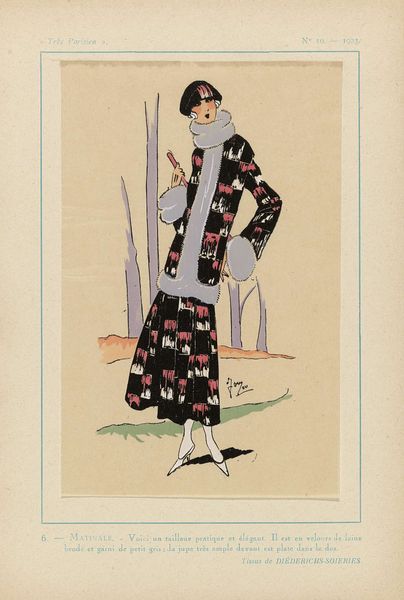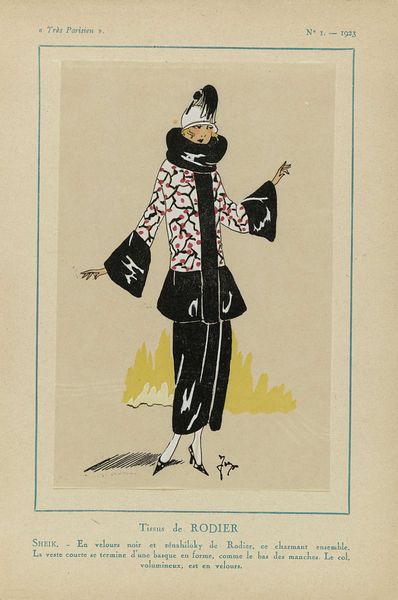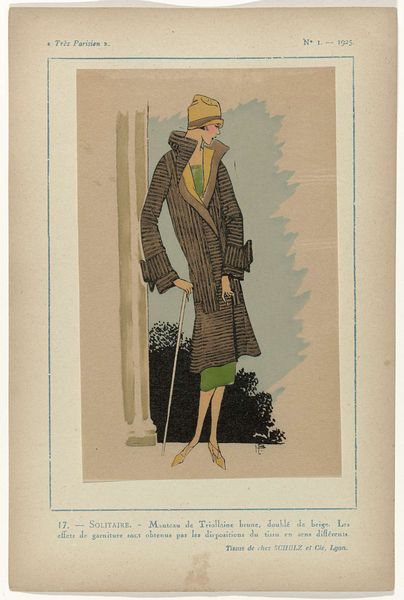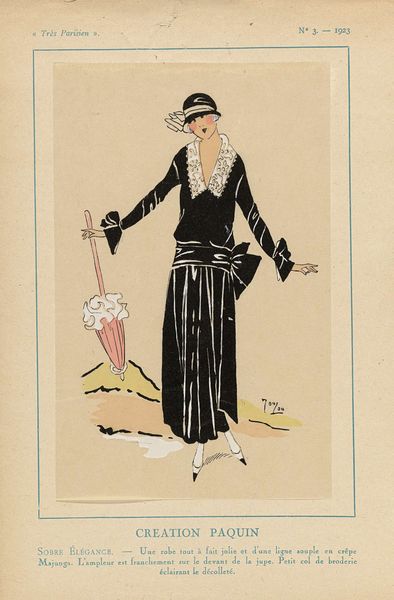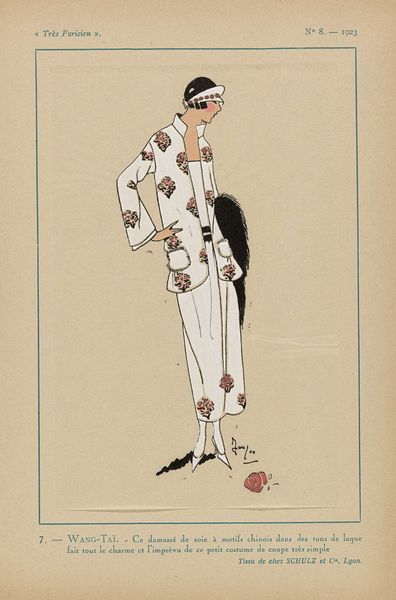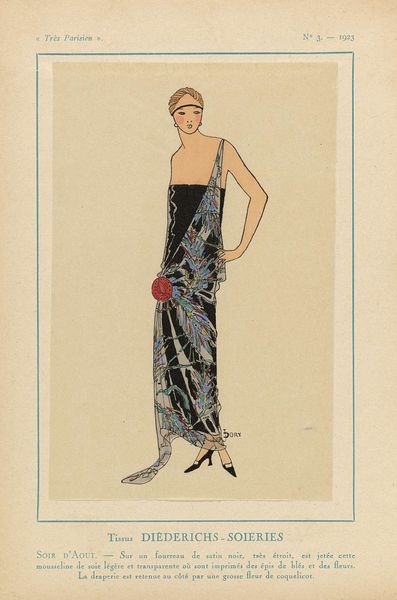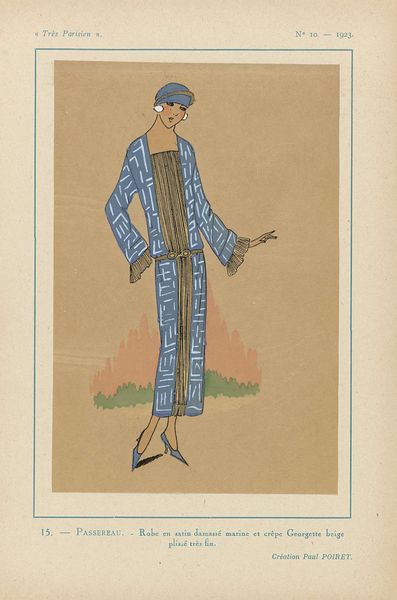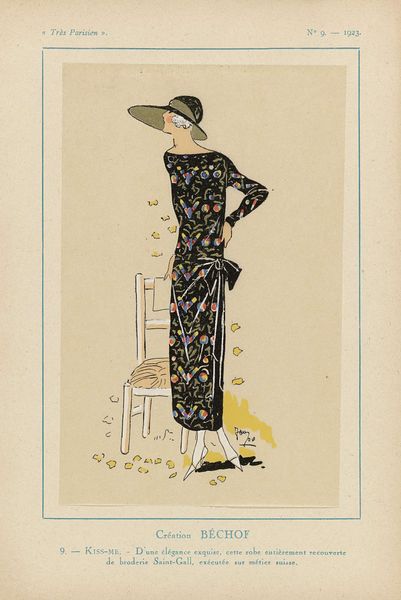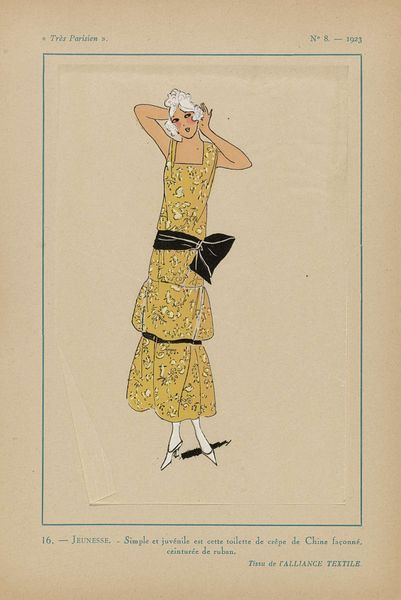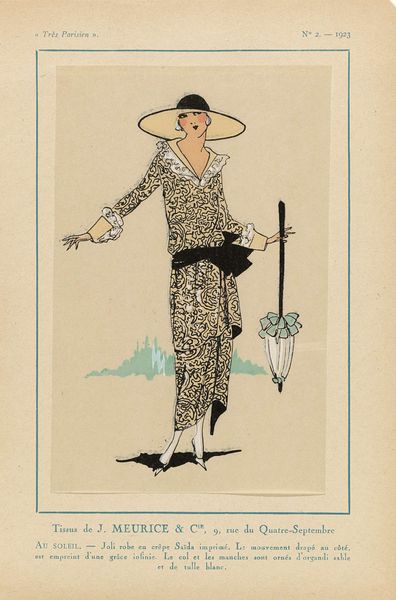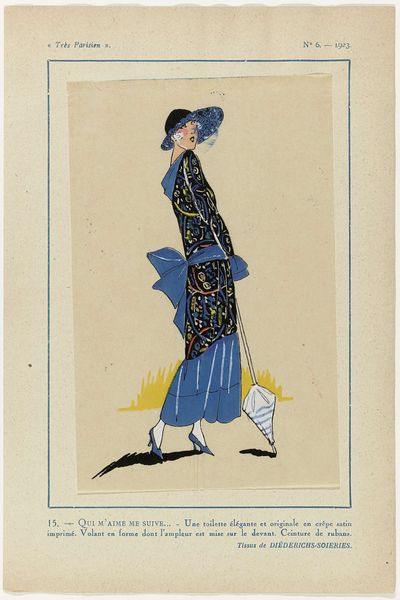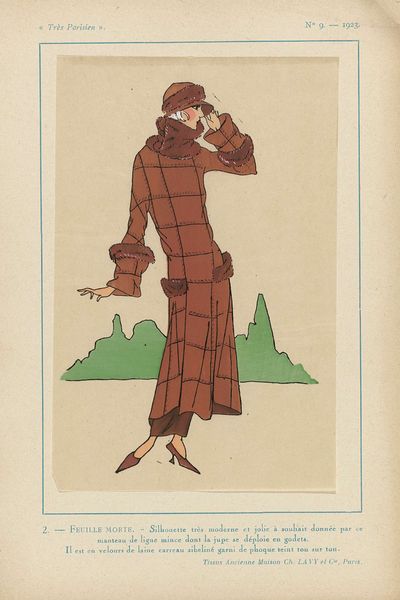
Très Parisien, 1923, No. 3: Tissus de RODIER. Le Sentier de la Vertu. 1923
0:00
0:00
anonymous
Rijksmuseum
Dimensions: height 269 mm, width 180 mm
Copyright: Rijks Museum: Open Domain
Editor: Here we have "Très Parisien, 1923, No. 3: Tissus de RODIER. Le Sentier de la Vertu," a watercolor print by an anonymous artist, held at the Rijksmuseum. It has a wonderfully delicate and refined aesthetic. What visual stories do you think this work conveys? Curator: Note the phrase, “Le Sentier de la Vertu,” or “The Path of Virtue.” What images come to mind when you think of that phrase? Here we see a modern woman, self-possessed, gazing directly at the viewer, almost challenging us. Editor: I see what you mean, particularly when considering it through the lens of the "path of virtue". Curator: Exactly. The print’s text alludes to “vivid and harmonious colors making for a happy opposition," seemingly about the Rodier textile on the jacket. But consider the garment itself: its Eastern influence, coupled with the daring silhouette, whispers of rebellion against traditional societal constraints. Does her expression strike you as virtuous in the conventional sense, or perhaps something more… liberated? Editor: Liberated, definitely. It feels like she's subverting expectations. Curator: Precisely. Her fashion choices are laden with meaning, acting as a visual language of emancipation and self-expression. Even the pastel shades in the backdrop emphasize her deliberate, bold modernity. Editor: So, it’s a visual argument for evolving ideals of virtue, expressed through fashion! That’s such a compelling read of this print. Curator: Indeed. And seeing it like this gives the artwork and, perhaps, our own perspectives a newfound appreciation of the dialogue between image and ideology. Editor: I hadn’t considered all that—thanks for enlightening me with the visual symbolism within this fashionable period piece.
Comments
No comments
Be the first to comment and join the conversation on the ultimate creative platform.
